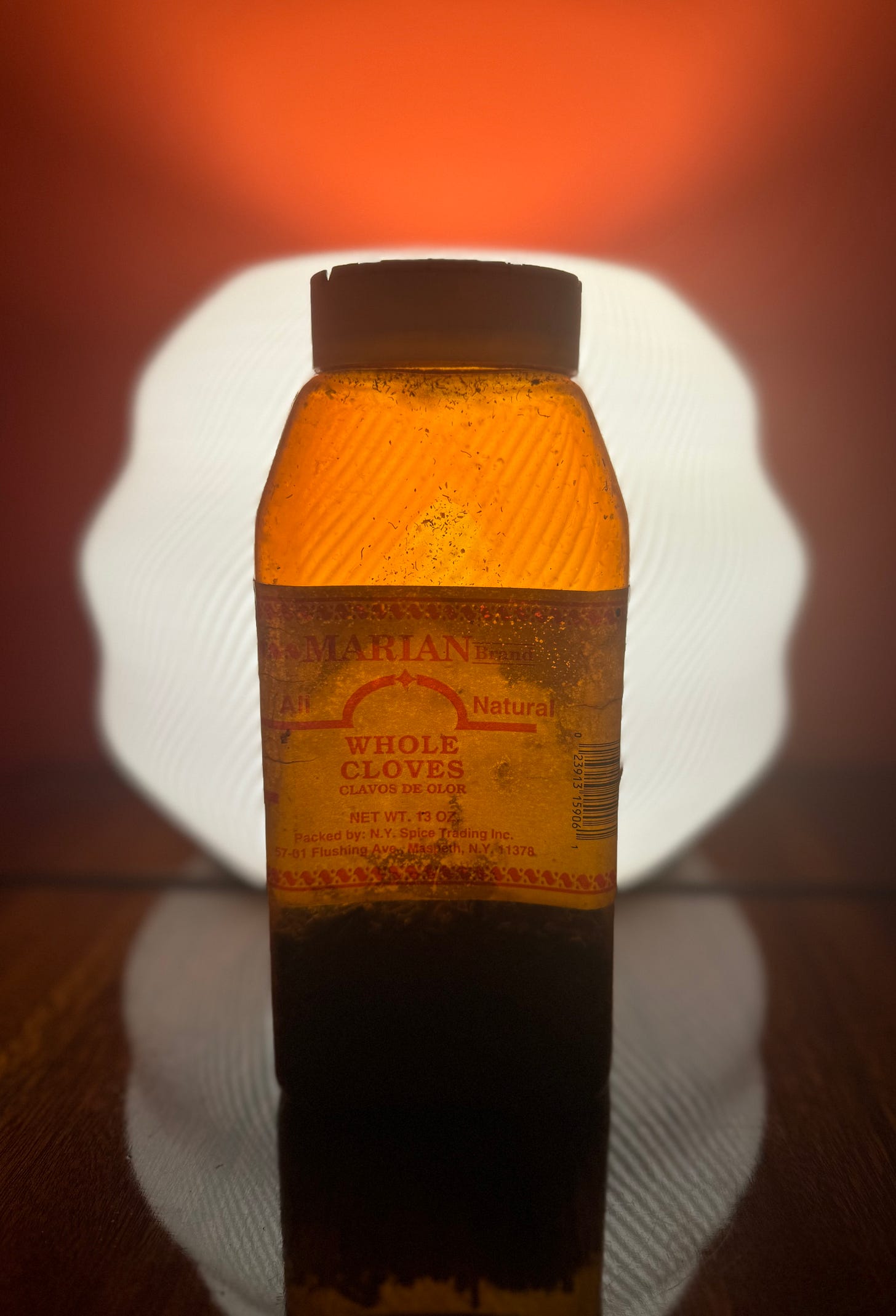Sometime in 1993 I went shopping for spices at an Indian grocery just off of 6th Street, on the Lower East Side of Manhattan. For the ground spices and masalas I chose smaller quantities, knowing they’d lose their pungency within a year two. But when it came to the cloves, I lost my mind. The thinking was, they’re whole. They’ll keep their flavor for ages. And in those days I was cooking Indian a lot: saag wala, rogan josh, tamatar murgh, turmeric rice, daals, aloos, etc.. Any given meal would require at least a dozen whole cloves. I chose a brown, translucent 13oz container. Not even a pound! I’d go through it no time.
Not that it mattered. On the one hand, it was just a jar of cloves. On the other hand, I now had plenty of cloves. But as the decade went by, I noticed that I never seemed to make much of a dent, and that I might’ve misjudged how many cloves I’d be needing. Still, no big deal.
More or less at the turn of the century, we moved to Argentina, where Indian cuisine was all but non-existent. But Indian was not the only foodstuff I missed. Argentina has the 6th largest Jewish population in the world. Yet there wasn’t a bagel in sight. And while the pizza was more than respectable (Argentina is arguably as Italian as it is Spanish), it wasn’t the New York style I was used to. It wasn’t Joe’s (the one on Carmine), or Sal’s in Mamaroneck, or the late-lamented Frank’s in Port Washington. But I wasn’t about to try my hand at bagels or thin-crust pizza. I’m not good with dough. And neither one calls for cloves, at least not in any universe I’d be caught dead living in.
Nostalgic for New York, the aroma of spices sizzling in hot ghee became therapeutic. The children grew tall, among other things, on my version of spinach chicken curry. I say “version” because over the years the recipe had drifted a bit from the original. While each iteration began the same, as it got closer to completion I’d start sampling and adjusting, turning to a small repertoire of fixers.
It was like mixing a song: a tablespoon of compression on the kick drum; yoghurt up 2 decibels; pan the heat to 10 and 2 o’clock. By the way, adding coconut milk is exactly like adding reverb. Proceed with caution. In any case, before you know it the song bears no resemblance to the picture in the cookbook. Adding cloves would not have helped that late in the process. But they were always there at the beginning, and then later in the yellow rice.
Another decade went by. My relationship with the jar of cloves became more complex. Everytime I took it down from the spice shelf I marvelled at how many remained. And I did the math. Extrapolating from the past, how long would it take to reach the end of this jar of cloves? Too long, and not long enough. The shelf-life in question was mine.
No cause for alarm. I’m in good health. But having arrived at a certain age, I’m beginning to think I’ll never be able to cook enough curry to get to the bottom of that jar of cloves. Of course, it could be anything: coffee spoons, the oak tree in the front yard, the whole world.
So I pick up the jar and hold it, Yorick-like, at eye level. I give it a good long stare, flip it around a few times, listening to the cloves falling from one end to the other, landing with a soft rattle on the plastic.





Amazing writing, Richard. This is beautiful. The connection to the bard is 100 percent justified. Happy Sunday to you and yours.
Thanks Richard, never thought about measuring time and a life full of experiences by a jar of cloves. Do you like mulled wine in Winter? Best wishes